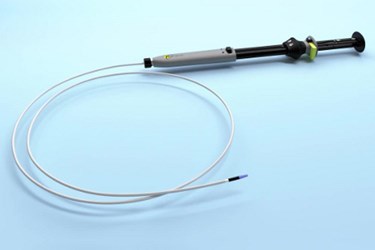FDA Downgrades Risk Class of Drainage Stents, Tuberculosis Tests
By Nick Otto

The FDA has issued final reclassification orders for several devices, moving them to a less stringent Class II with control category.
The first, at the request of Xlumena for its pancreatic drainage stents AXIOS, was originally requested back in February 2013. Then, the manufacturer asked the FDA to ease regulation for its AXIOS stent and delivery system, according to a Federal Register notice published Thursday.
According to the agency, pancreatic stents were originally placed into the more regulated Class III category by default, and would remain in a Class III category until the agency found the devices to be equivalent to similar products on the market.
Following a review, the FDA agreed that Class II special controls, in addition to other general controls, would be sufficient to ensure that new devices are safe and effective, thus taking pancreatic stents off of the more-stringent premarket approval (PMA) process.
Both the special and general controls include:
- The device and elements of the delivery device that may contact the patient must be demonstrated to be biocompatible.
- Performance data must demonstrate the sterility of patient-contacting components of the device.
- Performance data must support the shelf life of the device by demonstrating continued sterility, package integrity, and device functionality over the requested shelf life.
- Non-clinical testing data must demonstrate that the stent and delivery system perform as intended under anticipated conditions of use.
For reasons similar to Xlumena’s stents, the FDA also downgraded two other devices: nucleic acid-based in vitro diagnostic devices for the detection of Mycobacterium tuberculosis complex in respiratory specimens, as well as dengue virus serological reagents, used in the clinical laboratory diagnosis of dengue fever or dengue hemorrhagic fever caused by the dengue virus.
To sate earlier concerns for both the diagnostic and reagent devices, labeling will be included on the devices warning of false positive and false negative tests. More specifically, additional labeling warnings will be included for risks of tuberculosis infections to healthcare workers handling specimens, as well as errors for interpretation errors for the reagent devices, respectively.
Image credit: Xlumena
